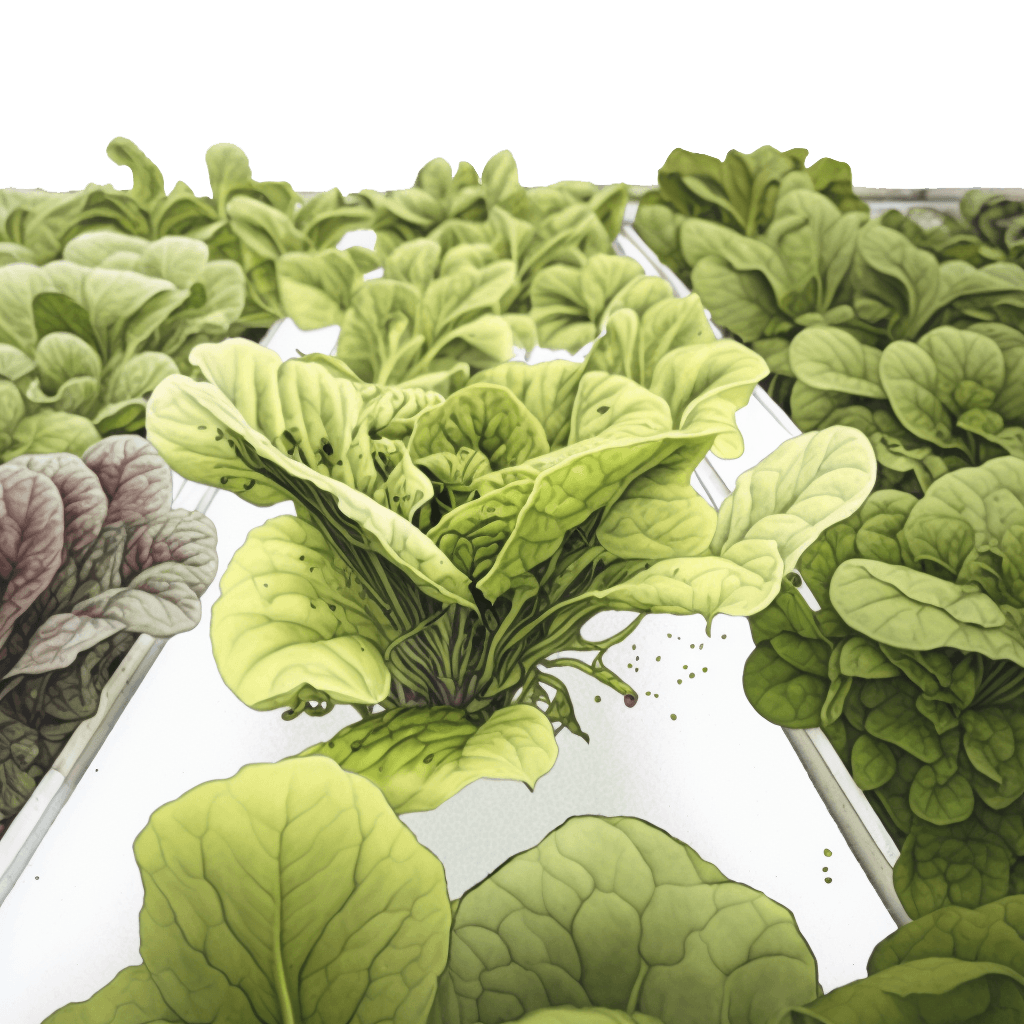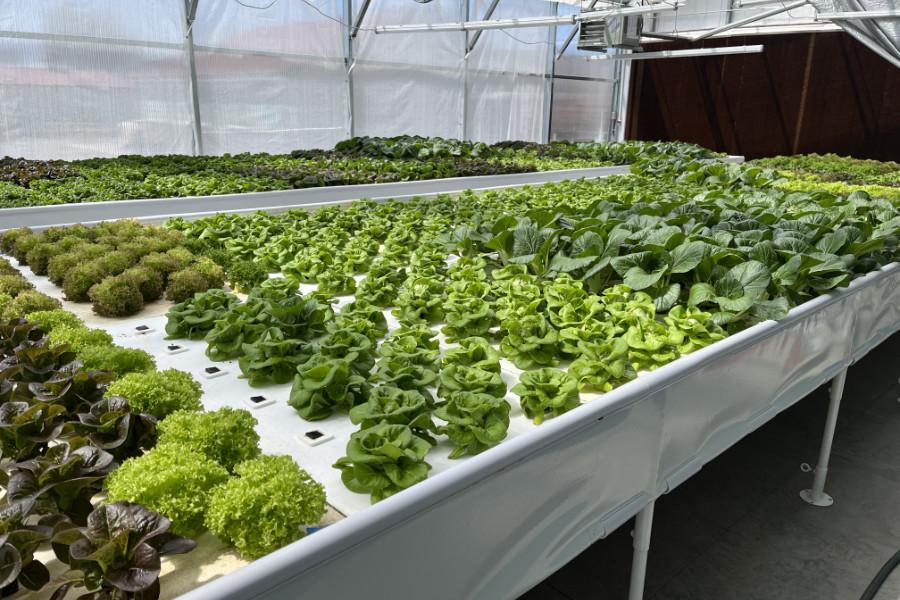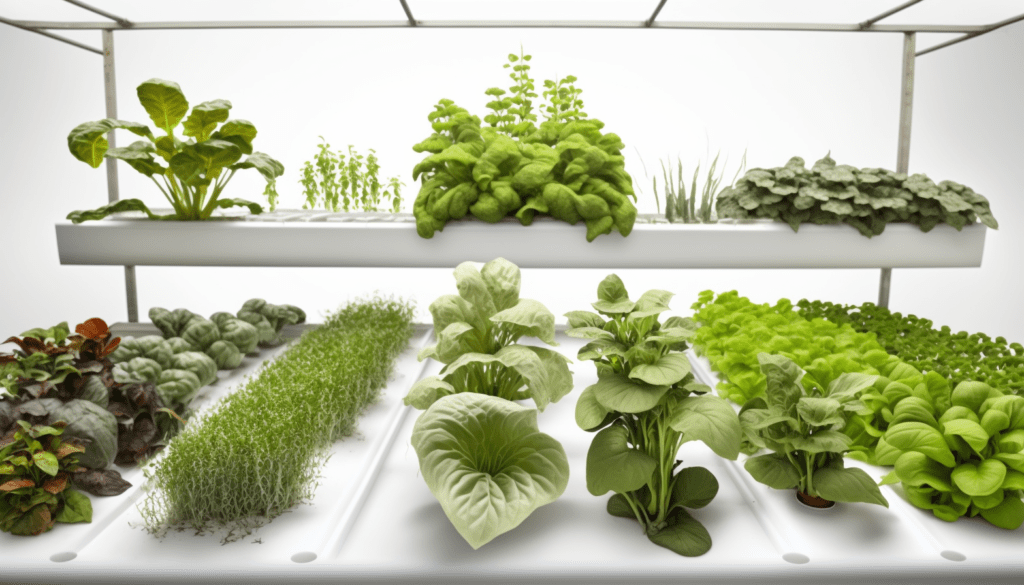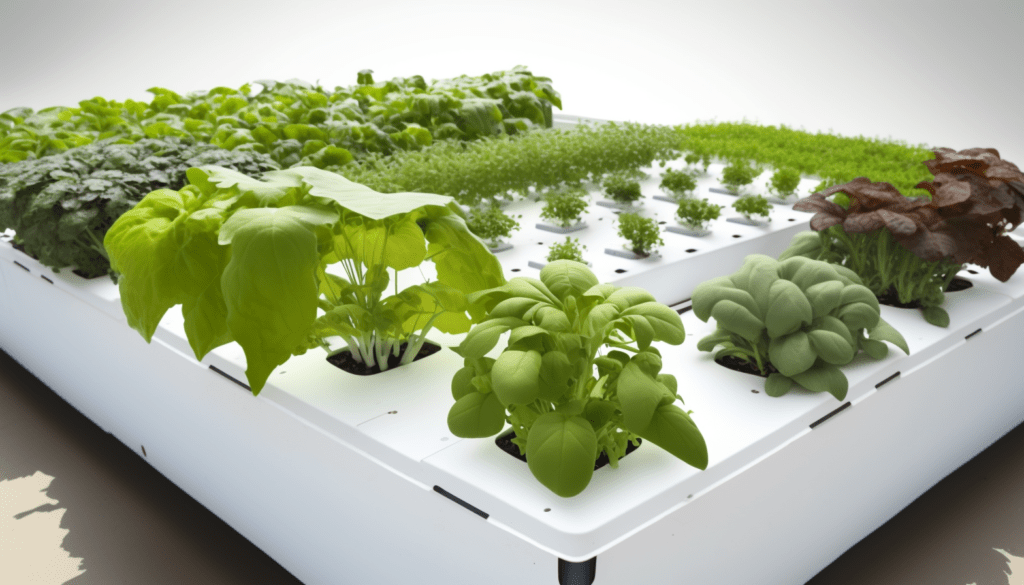What is a deep water culture (DWC) aquaponics systems

Deep water culture (DWC) is a hydroponic growing system that has been adapted for use in aquaponics gardening. At its core, DWC is a simple but effective way to grow plants in a nutrient-rich water solution, suspended over a tank of fish. But as with many seemingly simple ideas, there is much more to DWC than meets the eye.
The first thing you notice about a DWC aquaponics system is the water. It’s not just any water, but a thick, almost syrupy solution that is rich in nutrients and teaming with life. As you look closer, you see the roots of the plants, suspended in this solution, reaching down into the water like tentacles, absorbing the nutrients they need to grow and thrive.
But what’s really going on in this system is more complex than just roots and water. It’s a delicate balance between the needs of the plants and the needs of the fish that live below. The fish produce waste, which is filtered and pumped up into the DWC system to provide nutrients for the plants. In turn, the plants filter and purify the water for the fish, creating a closed-loop system that is incredibly efficient and sustainable.
Benefits of DWC aquaponics systems

One of the key benefits of DWC aquaponics systems is their simplicity. Unlike some other aquaponic systems that require pumps and filters, DWC systems are relatively low-tech, relying mainly on the plants and fish to do the work of maintaining a healthy balance. This makes them a great option for beginners, or for those who want to experiment with aquaponics gardening without making a large investment.
But don’t be fooled by the simplicity of the system. There is still a lot of science and skill involved in creating a successful DWC aquaponics system. The water temperature, nutrient levels, and pH balance all need to be carefully monitored and maintained to ensure that the plants and fish are healthy and thriving.
In addition, DWC aquaponics systems can be customized in a variety of ways to suit different plants and fish species. Some gardeners add additional filtration or aeration systems to enhance the system’s efficiency, while others experiment with different plant and fish combinations to find the perfect balance.
Key advantages of deep water culture (DWC) aquaponics systems

One of the key advantages of deep water culture (DWC) aquaponics systems is their versatility. These systems can be customized in a variety of ways to suit different plants and fish species, allowing gardeners to create a unique and personalized growing environment. Here are some of the ways that DWC aquaponic systems can be customized:
- Lighting: DWC systems can be set up with artificial lighting to provide plants with the light they need to grow. This is particularly useful in indoor or low-light environments.
- Plant types: While DWC systems are best suited for plants with shallow root systems, there is still a wide variety of plants that can be grown in these systems. Lettuce, herbs, and strawberries are popular choices, but other plants like tomatoes and peppers can also be grown with the right setup.
- Fish species: Different fish species produce different levels of waste, which affects the nutrient levels in the water. Gardeners can experiment with different fish species to find the perfect balance for their system.
- Nutrient levels: The nutrient levels in the water can be adjusted to suit the needs of different plants. For example, plants like lettuce and herbs require more nitrogen than other nutrients, while fruiting plants like tomatoes require more potassium.
- pH levels: The pH of the water in a DWC system can be adjusted to suit different plant and fish species. This is important, as different species have different pH preferences.
- Aeration: Adding additional aeration to the DWC system can increase oxygen levels in the water, which can benefit both the plants and fish.
- Filtration: Some gardeners choose to add additional filtration to their DWC system, which can help to remove solid waste and improve water clarity.
By adjusting lighting, plant types, fish species, nutrient levels, pH levels, aeration, and filtration, gardeners can create a system that is perfectly tailored to their specific needs and preferences. With a little experimentation and creativity, the possibilities for customization are endless.
Pros and Cons to Deep water culture (DWC) aquaponics systems

Deep water culture (DWC) aquaponics systems offer a unique way to grow plants and fish together in a closed-loop system. While there are many benefits to this type of system, there are also some drawbacks that gardeners should be aware of. Here are some of the pros and cons of DWC aquaponics systems:
Pros to Deep water culture (DWC) :
- High productivity: DWC systems provide an ideal growing environment for many types of plants, allowing them to grow quickly and produce high yields.
- Efficient use of water: DWC systems use water very efficiently, recycling the same water over and over again. This means that they require much less water than traditional soil-based gardening.
- Customizable: DWC systems can be customized to suit different plant and fish species, and can be adapted to suit a wide range of growing environments.
- Low-tech: DWC systems are relatively low-tech, relying mainly on the plants and fish to maintain a healthy balance. This makes them a great option for beginners or for those who want to experiment with aquaponics gardening without making a large investment.
Cons to Deep water culture (DWC) :
- Limited plant types: DWC systems are best suited for plants with shallow root systems, such as lettuce, herbs, and strawberries. This can limit the variety of crops that can be grown in the system.
- Limited fish types: Not all fish species are suitable for use in DWC aquaponic systems. Some fish may be too large or too aggressive for the small space, while others may not produce enough waste to support plant growth.
- Risk of power outages: DWC systems require a constant flow of water to keep the plants and fish healthy. This means that they are vulnerable to power outages, which can quickly cause problems in the system.
- Risk of pH fluctuations: The pH of the water in a DWC system needs to be carefully monitored and maintained. Fluctuations in pH can harm the plants and fish, so regular testing and adjustment is required.
DWC aquaponic systems offer many benefits, including high productivity, efficient use of water, and customizability. However, they are also limited in terms of plant and fish types, require careful management to prevent pH fluctuations and power outages, and may not be suitable for all gardeners. Gardeners should carefully consider these pros and cons before deciding whether a DWC aquaponic system is the right choice for them.
Deep water culture aquaponics systems offer a simple, efficient, and sustainable way to grow plants and fish together in a closed-loop system. While there is still much to be learned about this fascinating system, one thing is clear: DWC aquaponics has the potential to revolutionize the way we think about gardening and food production.
FAQs about DWC aquaponic systems
Can DWC systems be used to grow plants that require more acidic or alkaline soil?
Yes, the pH of the water in a DWC system can be adjusted to suit the needs of different plants.
Can you use DWC systems to grow plants without fish?
Yes, it is possible to use a nutrient solution instead of fish waste in a DWC system to provide nutrients to the plants.
How often should you check the pH and nutrient levels in a DWC system?
It is recommended to check the pH and nutrient levels in a DWC system at least once a week to ensure that they are within the proper range.
Are DWC systems suitable for commercial-scale aquaponic farming?
Yes, DWC systems can be used for commercial-scale aquaponic farming and are often used to grow crops like lettuce and herbs.
How do you prevent algae growth in a DWC system?
Algae growth can be prevented by reducing the amount of light that enters the system and maintaining proper nutrient levels.
What types of fish are best suited for use in DWC aquaponic systems?
Smaller fish species like tilapia, catfish, and trout are generally well-suited for DWC systems.
Can you add additional plants or fish to a DWC system once it is set up?
Yes, DWC systems can be expanded or modified to accommodate additional plants or fish.
How do you maintain the water temperature in a DWC system?
Water temperature can be maintained by using a heater or a chiller, depending on the needs of the plants and fish.
How do you control pests in a DWC system?
Pests can be controlled by using organic methods like companion planting or by using natural pest control methods like introducing beneficial insects.
Can DWC systems be used for outdoor aquaponic gardening?
Yes, DWC systems can be used outdoors, but they may be more susceptible to temperature fluctuations and weather conditions.




Leave a Reply